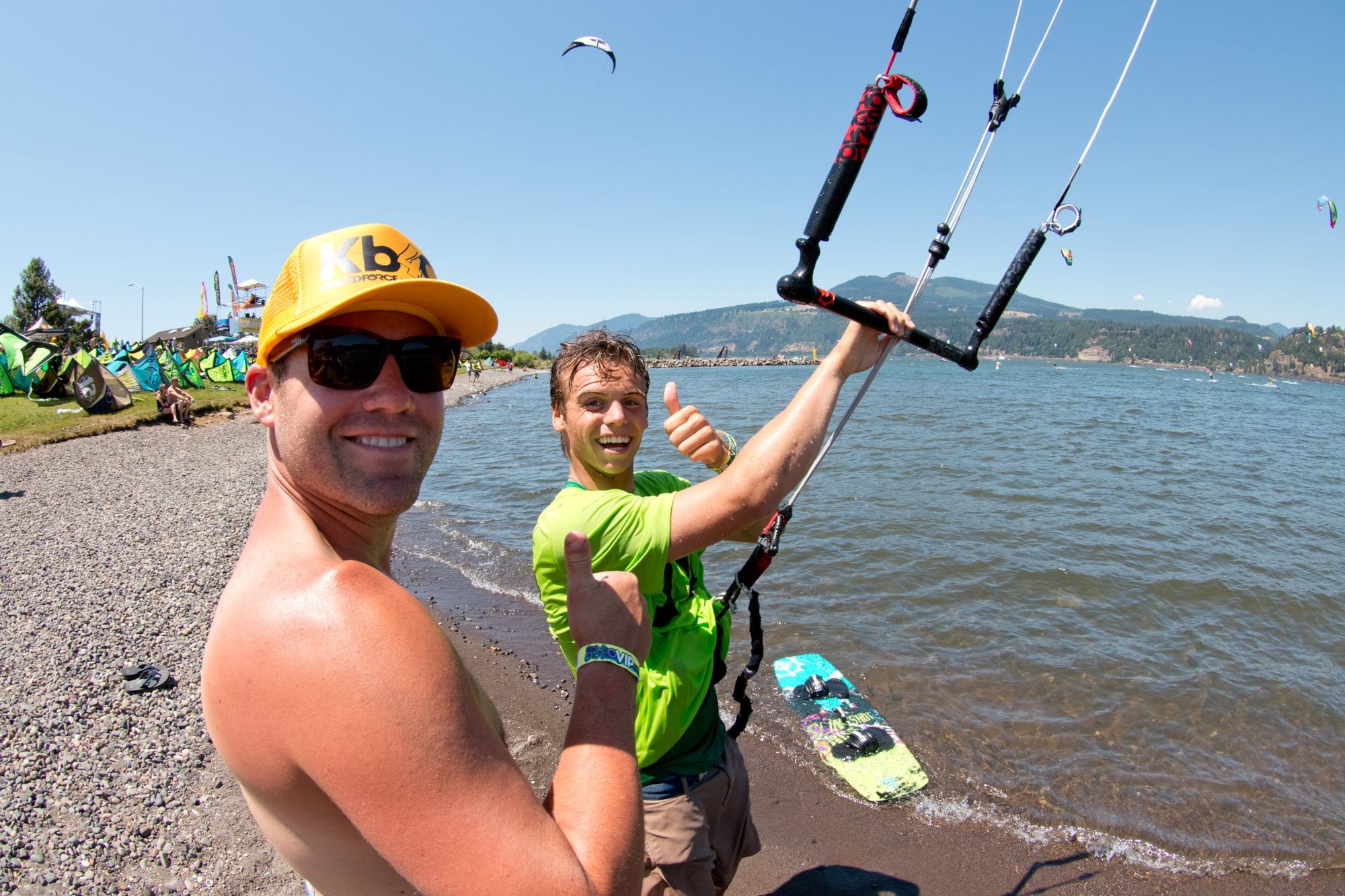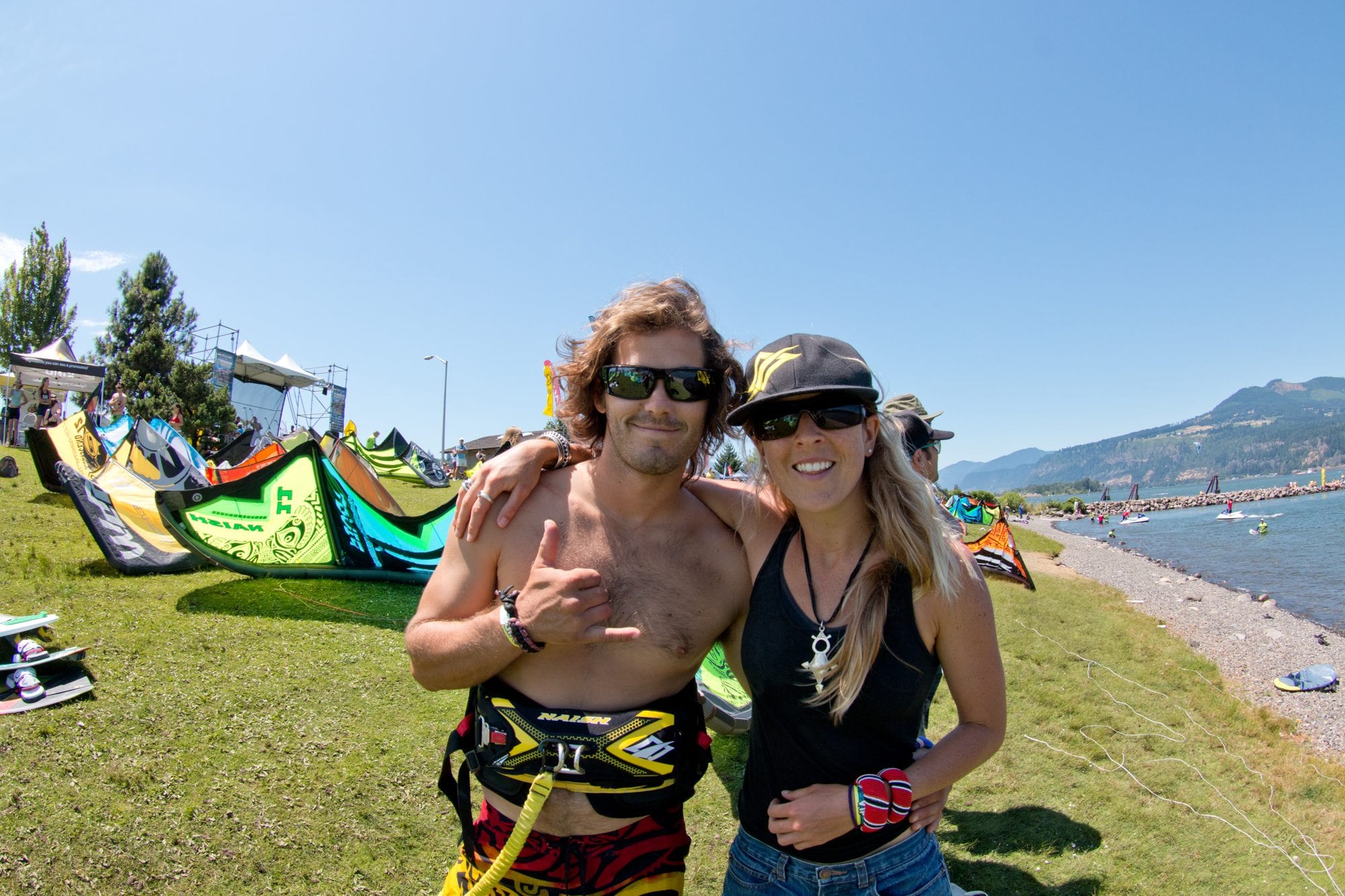Kiteboard 4 Cancer started from my personal experience with cancer. The culprit: acute lymphocytic leukemia. Its victim: my brother. The answer: a kiteboarding event. It seemed that simple. Grief takes on a lot of different faces and everyone has their own coping mechanism. Mine was to go kiteboarding; and it seemed like a good idea to get others to do the same. Back then, I had no thought as to how far that simple idea would go or the impact it would have on the lives of so many others.
The idea sprouted over drinks on a five-hour layover in Houston airport. Salty, refreshed and inspired by kiteboarding, Gregg Gnecco, Garret Zallen and I were on our way home from a successful kite trip to South Padre Island. At the time, my brother Scott was deep in a battle for his life at Seattle’s Children’s Hospital. In between the many four-hour drives to visit him, I decided to take off and go kiteboarding for a week. Seems selfish, huh? In hindsight, my reasoning, “You can’t take care of others unless you first take care of yourself,” ended up proving right and ultimately serving as a life-changing decision.
It was April 2007 and although we figured we could pull off an event that August, Scott lost his battle with Leukemia on June 5. Initiating an event of any size while mourning the tragic loss of a sibling is absolutely ludicrous. That being said, what I didn’t realize until years later is that the planning of that first KB4C actually served as the ultimate way to process my grief.
Our goal was to bring together our kiteboarding friends from around the Pacific Northwest, raise some money and have a whole lot of fun doing it. The format was to be a six-hour course race designed to challenge and embody the struggles that someone battling cancer faces on a daily basis. That goal and format has not changed much in the nine years that the event has run. That first year we aimed to raise $5,000 to distribute to various cancer charities, but we quickly exceeded this number and raised $30,000. The response to the event was overwhelmingly positive and we realized that this event was much more than just a one-hit wonder. Part kite festival, part kiteboarding competition and 100% a celebration of life, Kiteboard 4 Cancer continued to grow.
Over the years, KB4C gradually raised more funds which we granted to various cancer charities. After the 2010 event, we took a close look at what our donations were achieving within these organizations and realized that although $30,000 seemed like a lot to us, it was not nearly enough to truly make a difference in the large scale organizations we were working with. We wanted to do more.
Starting a kiteboarding event from nothing was one thing, but deciding to start a program of services for people affected by cancer was an entirely different challenge. However difficult, it was inspired by the healing experience of being on the water at KB4C. We decided that a water and outdoor program would be the most effective means of impacting the lives of those affected by cancer. In 2010, Athletes 4 Cancer was born out of the Kiteboard 4 Cancer event, with our main program being called Camp Koru. We created young adult survivorship camps based on three values derived from the Kiteboard 4 Cancer event: community, connection and the outdoors.
Fast forward five years ”” Camp Koru has run 23 programs to help young adults get their lives back physically, mentally and emotionally after cancer through week-long surfing, standup paddleboarding, skiing and snowboard retreats. Because Kiteboard 4 Cancer completely funds these camps, what makes Camp Koru so special and unique is that the kiteboarding community has made all of this possible. The 640 individuals and thousands of donors who have participated in KB4C over the last nine years are invested in this program as supporters more than they know. Each year, dozens of Camp Koru participants make the trip to Kiteboard 4 Cancer to check out the event that started it all. These cancer survivors often stand in awe of the kiteboarding and the busy beach scene, but what touches them the most is meeting the kiteboarders who have fundraised and have helped them transform their lives after cancer.
MEMORY BY TONY BOLSTAD
9-year participant, champion and top 5 finisher for 6 years
For solo participants, the first two hours are nothing. It’s the third hour when your body starts to wear a little and you feel hungry, tired and a little sore. But it’s not until the fourth hour that the mental part comes into play. You start to think about your limits and whether it was really such a good idea to sign up. You say to yourself, “next year I should leave this to someone else.” But you have your ups when people cheer you on and your downs when someone with fresh legs comes into the game whizzing past you.
During the fifth and sixth hours your body is beat: your legs are tired, your back aches and blisters begin to grow on both your hands and feet. Mentally, you start to wonder “Why me? Why won’t this ever end? Maybe a miracle will happen and they will call it early. Maybe the leaders will tangle and I’ll come up from behind.” This is the part where you get just a teeny tiny itsy bitsy taste of what it might be like to fight through cancer ”” how much physical and mental energy you have to put in to keep on fighting and moving forward.
It’s not until the end of six hours, when you finally crawl up on the beach, high five your friends, hug your family and grab a beer, that you get to breathe a sigh of relief that it’s over. But we have to remember, that for so many of our friends and family, it’s not over, and they have to keep on fighting.
MEMORY BY SENSI GRAVES
Liquid Force rider and 5-year participant
In 2013, my teammate Jason Slezak took cancer survivor and participant, Brianna Hirsch, around the course on a SUP board. Leading up to the event, this young lady had broken her ankle and couldn’t kite, but so badly wanted to participate. Brianna and Jason made their way around the course with the crowd cheering the entire time. Jason slowed our team down immensely on this lap but it served as a great reminder for what this event is all about ”” helping others in need.
There is no such thing as too small of a donation or gift. Even if you don’t have much money to donate or your schedule is too full to dedicate your time to volunteer, what truly matters is that even if all you can give is a hug, you’ll be giving with your heart and you’ll be helping someone.
MEMORY BY CORY ROESELER
Kite Designer and 9-year participant
The first time I completed the six-hour endurance derby I remember landing my kite, doubling over and collapsing with abdominal cramps. After 10 minutes I was finally able to stretch upright and walk over to my kite, but I still couldn’t bend over to roll it up. Each time I tried the cramps returned; I’ve never felt so helpless. After several minutes spent staring at my kite, several people came over and offered to give me a hand packing it up. Annoyed that I couldn’t do it myself, I realized the pain and discomfort along with the generosity of the thoughtful people helping me was the whole point of the event. Why else would we bother torturing ourselves for six hours?
This article was featured in Tkb’s summer 2016 issue, Vol. 13, No. 2. Want more like this? Subscribe here: https://www.thekiteboarder.com/product/magazine-subscription/











